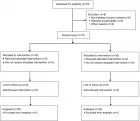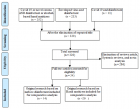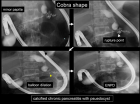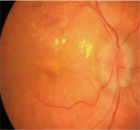Previous Issue (Volume - 7 | Issue - 1)
Studies on some spices and herbs: Chemical composition, health benefits and functional properties
Published on: 6th February, 2023
A comprehensive study was carried out to assess the microbiological, nutritional, biochemical and essential oil characteristics of three Egyptian traditional cultivars seeds, namely, cumin (Cuminum cyminum) and coriander (Coriandum sativum) spices as well as basil whole herb (Ocimum basilicum) collected from different Egyptian export centers as being ready for export. The found values for humidity in dry seeds of cumin (7.4%) and coriander (6.4%), as well as total ash and ash insoluble in acid (in cumin 7.7% and 0.74%, but in coriander 5.3% and 0.55%, respectively), were lower than the maximum limits indicated by the Egyptian Specification Standards (ES) and by International Standards Organization (ISO) for cumin and coriander seeds. Analysis of essential minerals in seed spices and herbs indicated that they were rich in K, Ca, Na, Fe and Zn. The total bacterial count was low content in seeds of cumin and coriander as well as fresh whole basil herb. The microbiological load in all tested seed spices and herbs was found lower than those indicated by the ES and ISO for cumin and coriander seeds. Yields in hydro-distilled essential oils (EOs) were the highest in cumin seeds (3.762%), while both coriander and basil herbs had lower amounts (0.285% and 0.686%, respectively). EOs contents were found higher than the maximum limits for cumin (1.5% - 2.5% on a dry weight basis), but within the limits for coriander (0.1% - 0.5% on a dry weight basis) as indicated by the ES and ISO for cumin and coriander seed oils. Gas chromatography of extracted EOs from seeds of cumin and coriander as well as basil herbs indicated the presence of 41, 35 and 47 compounds, respectively, where cumin aldehyde was the major component in cumin volatiles but was linalool in volatiles of both coriander seeds and basil herbs. EOs of basil herbs grown in Egypt were of the high linalool chemotype which was characterized by high contents of linalool and relatively lower amounts of eugenol. However, the major compounds in the three tested EOs from seeds or herbs grown in Egypt are in accordance with literature reports from different parts of the world. Volatile oil components in EOs of the three tested Egyptian spices and herbs were classified into groups, based on the relative area (%). The proportion of the major and the other main components in EOs from seeds of cumin and coriander cultivars were within the ranges indicated by both the ES and ISO for cumin seed oils (cumin aldehyde between 15% - 46%) and for coriander seed oils (linalool between 65% - 78%). The aim of the present work was to Assessment study certain commonly used Egyptian spices and herbal products for characterizing their physical, biochemical and microbiological properties.
Artificial awareness, as an innovative learning method and its application in science and technology
Published on: 24th February, 2023
The creation of the information society is associated with the creation of new intellectual, cultural, spiritual and material values, as well as with new principles and methods of social and interpersonal communication. Achieving this goal is impossible without changes in teaching methodology, teaching technologies and teacher’s work.The article is an overview and focuses on the following issues. In the information society, the era of biocomputers and quantum computers is coming, which will use not only artificial intelligence, but also artificial consciousness for simulation. Artificial awareness builds the foundations for the development of robots that will be widely used in various fields of industry and science. - Artificial awareness combined with artificial intelligence can be an innovative method in education and communication; - Quantum computers and biocomputers will find wide application in human education and social life;
Optimization of the kinetics of siRNA desorption from the surface of silicon nanoparticles
Published on: 2nd March, 2023
Oncological diseases are one of the most significant medical and social diseases in most countries of the world. Over the past decades, the search and development of new drugs, treatment regimens and methods of molecular diagnostics of malignant neoplasms remains relevant. In turn, an important goal of molecular genetic research is to suppress the expression of genes responsible for the development of tumors. The key targets taken into account in the development of antitumor drugs are proteins involved in carcinogenic changes in the cell. One of the promising molecular targets for the development of medicinal compounds in targeted therapy of tumor diseases is poly(ADP-ribose)polymerase 1 (PARP1). A potential way to inhibit PARP1 even at the stage of protein translation is RNA interference due to small interfering RNAs (siRNAs). For the penetration of siRNAs into the target cell, it is necessary to develop a method of their transportation controlled in space and time. An actual direction for solving this problem is the use of highly stable porous silicon-based nanoparticles. In the current study, in order to increase the functionality of nanoparticles, their surface was modified with various agents (functionalization), providing increased efficiency of drug loading and more uniform release.
Using Model Classification to detect Bias in Hospital Triaging
Published on: 12th June, 2023
Background: In light of the COVID-19 pandemic and the health crisis left in its wake, our goal is to develop extensive machine-learning techniques to provide a clear picture of the treatment, and possible mistreatment, of specific patient demographics during hospital triaging.Objective: We aim to reveal whether a patient’s treatment and hospital disposition is related to the following attributes - Emergency Severity Index (ESI), gender, employment status, insurance status, race, or ethnicity which our 100 MB dataset included.Materials and methods: Our work is separated into two parts - the classification task and data analysis. As part of the classification task, we used the k-Nearest-Neighbor classifier, the F1-score, and a random forest. We then analyze the data using SHapley Additive exPlanations (SHAP) values to determine the importance of each attribute.Results: Our findings show that significance varies for each attribute. Notably, we found that patients with private insurance programs receive better treatment compared to patients with federal-run healthcare programs (e.g. Medicaid, Medicare). Furthermore, a patient’s ethnicity has a greater impact on treatment for patients under 40 years of age for any given ESI level. Surprisingly, our findings show language is not a barrier during treatment.Discussion and conclusion: We, therefore, conclude that although hospitals may not be doing so intentionally, there is a systemic bias in hospital triaging for specific patient demographics. For future works, we hope to aggregate additional patient data from hospitals to find whether specific demographics of patients receive better healthcare in different parts of the United States.
Potential Use of Essential Oils and Their Individual Components in Cosmeceuticals: A Review
Published on: 7th September, 2023
The cosmetic industry is searching for new active ingredients from renewable natural sources to make more environmentally friendly and safe products. Botanical extract is a nearly limitless source of these new actives due to the current consumer demands as well as international regulations. Due to both their fragrant nature for the creation of fragrances and perfumes and the numerous advantageous properties of their individual components (EOCs), such as anti-inflammatory, antimicrobial, and antioxidant properties, essential oils (EOs) emerge as a very common natural ingredient in cosmetics and toiletries. Additionally, nowadays, the cosmetic industry includes EOs or different mixtures of their individual components (EOCs), either as active ingredients or as preservatives, in various product ranges (e.g., moisturizers, lotions, and cleansers in skin care cosmetics; conditioners, masks or anti-dandruff products in hair care products; lipsticks, or fragrances in perfumery). However, because each essential oil’s distinct chemical profile is linked to a different set of advantages, it is challenging to generalize about how they might be used in cosmetics and toiletries. Formulators frequently spend time looking for appropriate combinations of EOs or EOCs to achieve particular advantages in the finished products. The literature on the most recent developments in the use of EOs and EOCs in the production of cosmetic products is updated in this work’s review of the literature. Additionally, certain particular issues pertaining to the security of EOs and EOCs in cosmetics will be covered. It is expected that the information contained in this comprehensive review can be exploited by formulators in the design and optimization of cosmetic formulations containing EOs.
Hydrogel-Based Formulations for Drug Delivery to the Posterior Segment of the Eye
Published on: 12th September, 2023
Hydrogel-based formulations hold significant promise for treating ocular diseases that impact the posterior segment of the eye. These formulations exhibit the ability to surmount ocular barriers and offer sustained drug release, rendering them efficacious drug delivery systems. This article addresses the challenges linked to treating disorders affecting the posterior eye segment and underscores the imperative for less invasive drug delivery methodologies. We further delve into diverse contemporary ocular dosage forms, encompassing gels, nanostructures, and implants, with a specific emphasis on hydrogels. Hydrogels offer several merits, including precise targeting, sustained release, enhanced bioavailability, and non-invasiveness. Moreover, they curtail the risk of adverse effects and foster patient adherence. An enthralling advancement is the amalgamation of hybrid drug delivery systems, integrating nanoparticles, liposomes, dendrimers, and stimuli-activated nano-systems, with hydrogels for posterior eye ailment treatment. These hybrid nano-systems exhibit promise in enhancing drug stability, prolonging drug release, and pinpointing specific tissues within the posterior segment. We also provide an overview of ongoing clinical trials and approved hydrogel-based drug delivery systems, like Retisert and Ozurdex. These systems have demonstrated efficacy in managing chronic non-infectious uveitis, Age-related Macular Degeneration (AMD), and diabetic macular edema. Nevertheless, challenges persist, including optimizing bioavailability, maintaining drug stability, and implementing personalized treatment approaches. The incessant evolution of gel-based drug delivery systems stands to substantially enhance patients’ quality of life and establish new benchmarks in treating posterior eye diseases. The future of ophthalmology brims with excitement, as gel-based drug delivery systems hold the potential to revolutionize ocular therapies, providing effective remedies for an array of vision-related afflictions.
Gene Expression and Functional Analysis in Patients with Acute and Chronic Renal Allograft Rejection
Published on: 3rd November, 2023
Kidney transplantation is the therapy of choice for patients with end-stage kidney disease (ESKD). Nevertheless, the main limitation for long-term graft survival is immune-mediated rejection. Some authors have proposed that differences in immune effector mechanisms are influenced by underlying molecular mechanisms; thereby, the identification of differentially expressed genes in acute or chronic rejection in non-invasive samples such as urine may be essential for the identification of potential biomarkers and biological processes associated with allograft outcomes. Our aim was to explore differences in gene expression and functional categories associated with acute and chronic kidney rejection in blood, biopsy, and urine of kidney transplant patients using RNA-Seq. RNA was isolated and sequenced implementing standard protocols. Analyses were addressed to identify differentially expressed genes (DEGs) and Functional Categories of Gene Ontology comparing between samples. Then we focused on immune genes and pathways to identify their association with the allograft. We identified a significant transcriptional similarity between biopsy and urine, in comparison with blood in acute and chronic rejection. Functional analyses suggested an enrichment of immune processes such as antigen processing and presentation, and regulation of B cell receptor signaling pathway in blood of acute and chronic rejection, respectively. Additionally, we observed an increase in expression of chemokines in biopsy and urine of both outcomes along with an increase in chemokine receptors in blood. Our findings suggest that urine is suitable for identifying potential biomarkers and biological processes related to renal allograft rejection, as it shares a significant number of regulated genes with biopsy.
Ecophysiology of Four Mediterranean Forest Species
Published on: 29th December, 2023
Forеst dеgradation has bеcomе incrеasingly pronouncеd in rеcеnt timеs due to shifts in climatе pattеrns and prolongеd drought pеriods. This invеstigation aims to cultivatе high-quality vеgеtation and gain insights into thеir еcophysiological rеsponsеs undеr conditions of watеr strеss. Spеcifically, wе conductеd еxpеrimеnts on 6-month-old individuals from two dеciduous spеciеs (Quеrcus subеr and Cеratonia siliqua) and two conifеrs (Tеtraclinis articulata and Cеdrus at-lantica), subjеcting thеm to watеr strеss conditions. Wе mеasurеd and analyzеd both thе basic (Ψb) and minimum (Ψm) lеaf watеr potеntials, factoring in climatic variablеs for all four forеst spеciеs. Our findings rеvеal that Quеrcus subеr еxhibits morе nеgativе valuеs, with a basic lеaf watеr potеntial of -0. 42 MPa and a minimum lеaf watеr potеntial of -1. 43 MPa, comparеd to thе othеr studiеd forеst spеciеs. On thе contrary, Cеdrus atlantica displays lеss nеgativе valuеs for thе minimum lеaf watеr potеntial, rеcording -0. 89 MPa. Thеsе outcomеs еnablе us to idеntify thе spеciеs displaying grеatеr rеsiliеncе against watеr strеss and climatе fluctuations. Nеvеrthеlеss, they also prompt broadеr inquiriеs into thе undеrlying mеchanisms govеrning watеr utilization in forеst flora.

HSPI: We're glad you're here. Please click "create a new Query" if you are a new visitor to our website and need further information from us.
If you are already a member of our network and need to keep track of any developments regarding a question you have already submitted, click "take me to my Query."



















































































































































